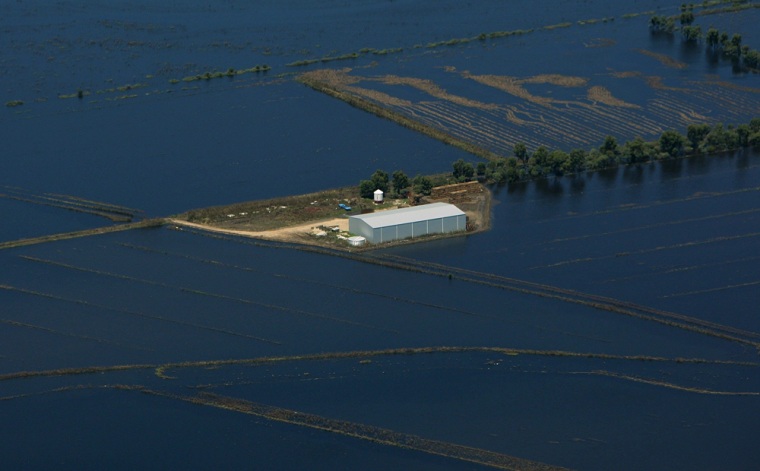A surging river that crested Thursday flooded and isolated a new community as Australia's flood disaster continued.
The flooding in Kerang, in the southeast state of Victoria, strained a levee serving as the main protection between the muddy waters and residents' homes.
It follows weeks of massive flooding in northeastern Queensland that the government says could be the nation's most expensive natural disaster ever.
Overflowing rivers swamped an area larger than France and Germany combined, shut down much of Queensland's lucrative coal industry and left 30 people dead.
Walls of water miles wide are surging across northern and western Victoria in the wake of record rainfall last week. Sixty-two Victorian towns have already been affected by rising waters and more than 3,500 people have evacuated their homes.
More than 1,000 residents in Kerang did not evacuate and are isolated, . A recently built levee is keeping the water from their homes, according to the paper.
Authorities have had to conduct more than 150 rescues after residents ignored advice not to go near the rising water, th e newspaper reported.
Eyes on levee
Floodwaters in the Kerang region are the highest they've been in more than 100 years, said Kim Healey, a spokeswoman with the State Emergency Service.
Up to 1,500 homes in the town could be inundated if the levee holding back the water from the swollen Lodden River gives way. It has held out so far, but water levels were expected to remain high for several days.
"The primary concern is the ability of the levee to withstand high flood levels for an extended period of time," the Sydney Morning Herald quoted Healey as saying.
"This flood event is still far from over. We are now likely to see further impacts, and in the next 24 hours in particular in the towns of Brim, Beulah and Jeparit, we're also preparing communities now between Kerang and Swan Hill," she said.
Residents of Dimboola, a town of about 2,000 in the state's northwest, were asked to evacuate Thursday as the Wimmera River that runs through the community surged higher.
The government has said the Queensland floods could be the country's most expensive natural disaster ever, but has not yet released estimates of the cost of the damage.
Some estimates already were at $5 billion before muddy brown waters swamped the state capital, Brisbane, last week.
"People's homes are stripped, they've got nothing. We've got to rebuild their homes and help them rebuild their lives," Queensland Premier Anna Bligh told Australia's Seven network on Thursday. "So recovery is still a long way down the track — inch by inch, street by street."
British Foreign Secretary William Hague, in Australia for ministerial talks, commiserated with flood survivors at a barbecue in Brisbane.
"People in Britain were watching this hour by hour, minute by minute, hoping and praying for you," Hague said. "It's hard to imagine the volume of water that came up from the peaceful looking river over there."
Twenty of Queensland's coal mines were given special permits Wednesday to pump floodwater from their sites and another 18 applications were under consideration, said Mike Birchley, the acting assistant director general of Queensland's Department of Environment and Resource Management.
Birchley said the permits carry conditions aimed at minimizing environmental damage from the extra water flows into surrounding creeks and rivers.
"The last thing the people of Queensland need while they are still experiencing elevated water levels in their communities is further risks to their local waterways," Birchley said in a statement.
Many of the state's 57 coal mines were working around the clock to remove floodwater and secure access to rail transport after tracks and bridges were washed away, said Michael Roche, chief executive of the state miners' association Queensland Resources Council.
